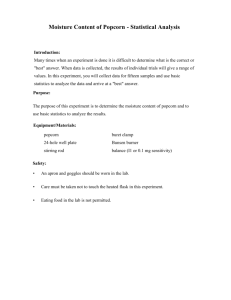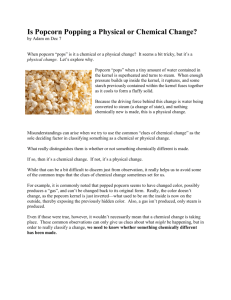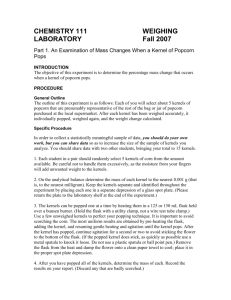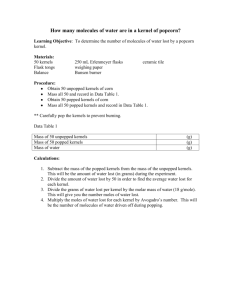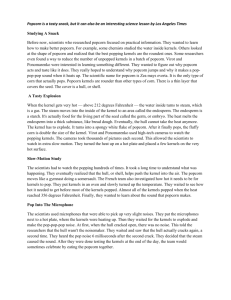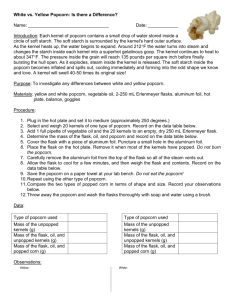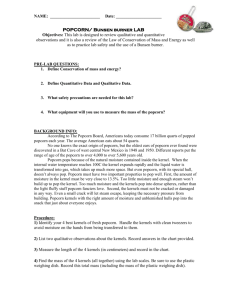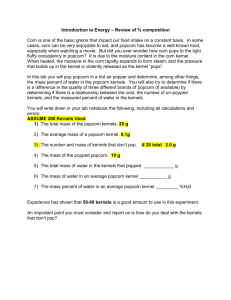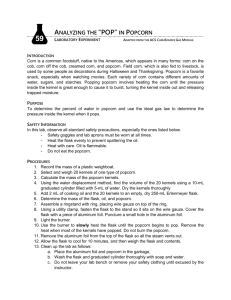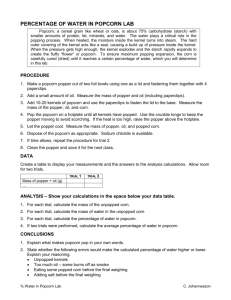Popcorn Moisture Content: Statistical Analysis Lab
advertisement
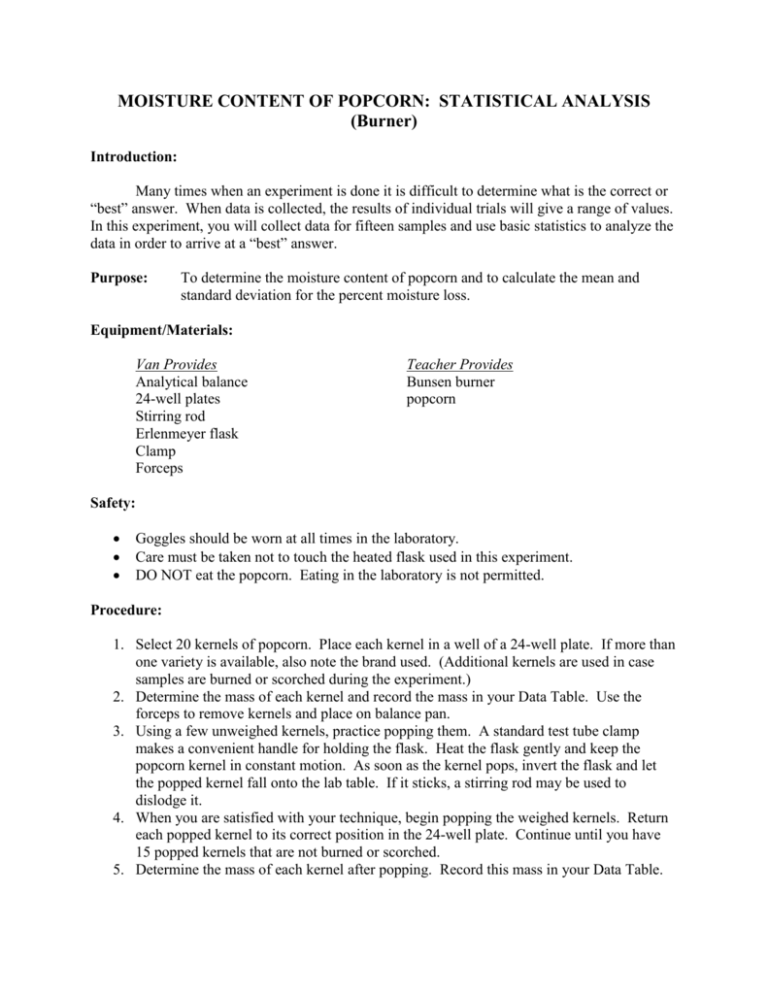
MOISTURE CONTENT OF POPCORN: STATISTICAL ANALYSIS (Burner) Introduction: Many times when an experiment is done it is difficult to determine what is the correct or “best” answer. When data is collected, the results of individual trials will give a range of values. In this experiment, you will collect data for fifteen samples and use basic statistics to analyze the data in order to arrive at a “best” answer. Purpose: To determine the moisture content of popcorn and to calculate the mean and standard deviation for the percent moisture loss. Equipment/Materials: Van Provides Analytical balance 24-well plates Stirring rod Erlenmeyer flask Clamp Forceps Teacher Provides Bunsen burner popcorn Safety: Goggles should be worn at all times in the laboratory. Care must be taken not to touch the heated flask used in this experiment. DO NOT eat the popcorn. Eating in the laboratory is not permitted. Procedure: 1. Select 20 kernels of popcorn. Place each kernel in a well of a 24-well plate. If more than one variety is available, also note the brand used. (Additional kernels are used in case samples are burned or scorched during the experiment.) 2. Determine the mass of each kernel and record the mass in your Data Table. Use the forceps to remove kernels and place on balance pan. 3. Using a few unweighed kernels, practice popping them. A standard test tube clamp makes a convenient handle for holding the flask. Heat the flask gently and keep the popcorn kernel in constant motion. As soon as the kernel pops, invert the flask and let the popped kernel fall onto the lab table. If it sticks, a stirring rod may be used to dislodge it. 4. When you are satisfied with your technique, begin popping the weighed kernels. Return each popped kernel to its correct position in the 24-well plate. Continue until you have 15 popped kernels that are not burned or scorched. 5. Determine the mass of each kernel after popping. Record this mass in your Data Table. MOISTURE CONTENT OF POPCORN: STATISTICAL ANALYSIS Data Table Name: Date: Period/Group: Data Table: Well Location Mass Before Mass After Mass Lost A-1 A-2 A-3 A-4 A-5 A-6 B-1 B-2 B-3 B-4 B-5 B-6 C-1 C-2 C-3 C-4 C-5 C-6 D-1 D-2 Totals /////////// /////////// /////////// Calculations: Mean = x = x N Calculations: % Mass Lost % Mass Lost – Mean (% Mass Lost – Mean)2 /////////////// These are the formulas you will use to calculate mean and standard deviation. where x = individual data and n = number of samples (x – x )2 Standard Deviation = n–1 1. Determine the mass lost by each kernel of popcorn and the percent of mass lost. 2. For the 15 kernels that you have selected to use for this experiment, calculate the average (or mean) percent mass lost. 3. Subtract the mean mass lost from each individual percent mass lost. Record this value in the Data Table. 4. Finally square this final value and record the value in the table. 5. Using the formula provided, calculate the standard deviation for the percent mass lost. Questions: 1. What was the nature of the mass lost? What indications or observations did you have for this? 2. In a “normal” distribution, 67% (or 2/3) of the samples should be within +/- one standard deviation value of the mean. Was this true for your trials? Hint: Mean + 1 std dev How many samples are in this range? Mean – 1 std dev 3. Using the average mass of a popcorn kernel, how many kernels would you predict to find in a one pound bag of popcorn? 4. If more than one brand of popcorn was tested, was there a difference in the moisture content? How might this affect the popping of each brand?
